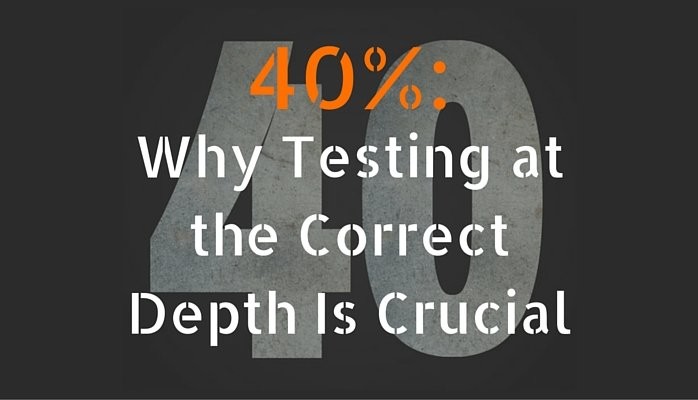
40%: Why Testing at the Correct Depth (in Concrete) Is Crucial
All concrete slabs contain moisture and they always will. This is because concrete is composed of three main ingredients: water, cement and aggregate. The three function together to form a concrete slab.
Moisture problems occur when flooring installers and contractors do not permit sufficient time for the process of drying concrete. During this process, some (not all) of the water migrates to the slab’s surface and evaporates. It is the only way moisture can leave a concrete slab. Once the slab is sealed with a finished floor product, the process of drying stops.
The appropriate level of “dryness” of a concrete slab will depend on the desired finish treatment. The target that installers should keep in mind prior to applying a particular flooring adhesive or finish is the manufacturer’s relative humidity (RH) specification for the moisture that’s within the slab. Achieving this target will help assure success when the flooring product is applied to the slab. Many flooring failures occur when installers apply floor coverings over slabs with high RH, thus trapping excess moisture.
Historical Industry Practices
Historically, over a period of decades, the flooring industry has wrestled with various methodologies for concrete moisture measurement. In the mid-20th century, people began utilizing the anhydrous calcium chloride test to determine concrete slab readiness. This test measured the moisture vapor emission rate (MVER) at the slab surface. Results were tabulated by the number of pounds of water that evaporated for every 1000 square feet of concrete slab over a 24-hour period. If the MVER was within a specified range, contractors believed it was safe to proceed with the installation of the floor covering.
However, in recent decades, industry experts have questioned the integrity of the anhydrous calcium chloride test. They have discovered that its test results can mislead, many times providing a “false negative” result when moisture emissions are low and a “false positive” result when emission levels are higher. Experts have also questioned the test’s utility because it fails to indicate moisture levels deeper within the slab. The test only evaluates the slab’s moisture condition to a depth of about 20mm, or ¾ inch.
We are now in an entirely new age of concrete moisture assessment. RH testing is rapidly becoming preferred over the calcium chloride test. RH testing takes into account the process of moisture migration and the moisture gradient that exists within the slab during drying. And unlike the calcium chloride test, it is not highly sensitive to ambient conditions that affect the rate at which moisture is absorbed and released from concrete slabs.
RH testing is generally conducted using an in situ method of moisture measurement. This means that RH sensors are placed below the surface of the concrete (40% below, to be precise, when slabs are drying from one side, or 20% below when drying from two sides). Based on extensive testing in the 1990s, scientists have demonstrated that RH readings taken at these depths will indicate the true moisture condition of the slab. In essence, the industry has been shifting to a much more scientific approach for determining slab readiness.
“Dry” Concrete is Not about Mathematics
Concrete “dries” as water rises from deep within the slab to its surface in order to evaporate. It is a process that takes time, and the amount of time can be influenced by the ambient conditions around the slab as it dries. This means the drying process is not one of mere mathematical calculation (slab depth x # of days = dry slab) but a process that will require accurate monitoring of the slab’s RH over time.
Two Crucial RH Specifications
RH testing of concrete actually utilizes either of two important depths to assess moisture conditions and avoid moisture-related problems.
When constructing structural or cast-in-place slabs, installers can determine concrete readiness by conducting RH tests to 20% of slab depth. However, this depth is appropriate only if a slab is drying on two sides. If moisture content is interacting with air on two sides and evaporation is occurring from two sides, RH testing at 20% gives the most reliable results.
For slabs at or below grade (installed with vapor barriers over ground) or elevated slabs poured in pan decking, contractors must assess moisture conditions at 40% depth. Installers drill holes in the slab and insert RH probes for assessing the moisture condition at that depth.
RH test kits are designed and engineered for RH sensors to be deployed at the appropriate depths in the concrete for fast and accurate testing. By using these kits and obtaining accurate, scientifically-based test results, the floor installer or contractor is armed with reliable information to make the right decision about when to install the finished floor.
For concrete slabs to pass moisture content muster, always test for moisture deep within the slab. That’s best done with in situ RH testing.